Japan #3 – Food -December 2014
Food is such an important part of traveling to new countries. While we do most of our own cooking in our self-contained camper, we never miss the opportunity to try the local specialties. Wandering through the market place in Kyoto, without a translator standing next to us, the question was, “What is it?” While there were a few things we could recognize, there were many others that looked more like bait to me. Shrimp and baby octopus were easy to identify. Fresh crab was a popular item but at prices like 25,000 Yen, ($202.00), or even 42,000 Yen ($339.00), apiece or per kilo, we settled for a little take-out sushi.
Fresh Crab? Take out your wallet!
Normal vegetables were plentiful, but they took on a different appearance when prepared Japanese style. Spices are a very interesting part of Japanese cooking and there were plenty to choose from. We were particularly intrigued with Sansho Japanese Peppers, actually seedpods of the Japanese prickly ash (Zanthoxylum piperitum). They have a sharp, citrusy taste, with an electrifying tingling numbness that can linger for more than ten minutes. Related to Szechuan peppercorns, but far stronger, they bring a sensation that is something like a mild electrical current. Sanshos appear to act on several different kinds of nerve endings at once, inducing a sensitivity to touch and cold in nerves that are ordinarily nonsensitive, causing a kind of general neurological confusion in your mouth. Yes, you can taste a few in the market.
A 1oz. piece of Sashimi can cost $17.00
Safe to say, if it swims in the ocean it’s edible, and sometimes pricy. The record for a bluefin tuna was $1.8 million. Yeah, $1,800,000.00 US dollars! The best slices of fatty bluefin – called “o-toro” can sell for 2,000 Yen ($17.00) per piece at upmarket Tokyo sushi bars. The fish’s tender pink and red meat is prized for sushi. With a single mouthful-sized piece of sashimi weighing around 1 oz, the record-breaking tuna is worth around $219.00 per bite. Japanese eat 80 per cent of the bluefin tuna caught worldwide.
Tea or Sake?
To wash it all down, there is always tea or sake. Tea is served with most meals and we found some interesting varieties in the market. We visited the Historic Gekkeikan Sake Okura Museum for an educational tour showing how this traditional wine was distilled.
Japan’s tradition of sake making began more than 2,000 years ago shortly after rice cultivation was introduced from China. Though the first few centuries yielded a beverage quite unlike that of today, years of experience perfected brewing techniques and increased sake’s overall appeal and popularity. The Gekkeikan sake brewery was founded in 1637 in the town of Fushimi, a location well known for its high quality of water.
If you want to take an experimental viewpoint, sometimes what makes a food fall into the “gourmet” class, is that you don’t know how it was made or what’s in it. When all else fails, there is always a hot dog on a stick and a cold beer. See how many of the photos here you can identify.
- Fried cabbage with an egg and spinach garnish?
- Looks like hash browns but I don’t think so.
- Baby octopus on a stick or grilled and dipped in a tangy sauce?
- Deep fried shrimp. That was easy.
- No idea!! Bamboo shoots?
- Dried octopus?
- Baby squid?
- Very big fish eyeballs
- Take a guess.
- I see little fishies and maybe some seaweed wraps.
- Fresh squid ready for the grill.
- I see a hot dog.
- The vegetables looked fresh and mostly normal.
- Square persimmons?
- Seaweed? Great for seasoning.
- The center dish is made from a kind of vegetable called Mozawana, used for a topping on rice or pasta. To the right is a mixture of eggplant, cucumber, ginger and sesame, often used for making rice balls.
- These Sanshos peppercorns act on several different kinds of nerve endings at once, causing a kind of general neurological confusion in your mouth.
- Nice looking fresh crabs but slightly out of our budget.
- Must be something very special at 42,000 Yen ($339.00), apiece or per kilo.
- Do-it-yourself fish soup?
- Looks like a fresh tuna, cheap at only 49,000 Yen. ($395.80). Is that per kilo or for the whole fish?
- If they can’t sell it fresh then dried is the next best thing.
- We settled for a cute little box of take-out sushi. Condiment was a little plastic fish of soy sauce.
- In the operating room, fresh fish are expertly prepared for the market.
- We guess that if a bite of tender pink bluefin tuna can cost $219, you need special knives for the surgery. Custom knives were sold and sharpened in the marketplace.
- Is she tasting Sanshos peppercorns or just wondering how much squid to buy for dinner?
- Similar to South Korea, the menu of a restaurant is shown full size in the window.
- Before cooking and stirring it a typical dish can look like this.
- Slices of pork, bacon and Kobe beef were grilled one bite at a time at our table.
- The chef (second on the left) and his crew were gracious hosts.
- Maybe dessert? Looks very sweet.
- Monika scored a bag of very special soup.
- Japan’s tradition of sake making began more than 2,000 years ago and like any good wine, there are many different tastes and qualities.
- After our visit to the Historic Gekkeikan Sake Okura Museum we were able to taste a few varieties.
- The Gekkeikan sake brewery was founded in the town of Fushimi, a location well known for its high quality of water.
- When all else fails, there is always a hot dog on a stick. We loved the little squeeze packets of ketchup and mustard. How ingenious!



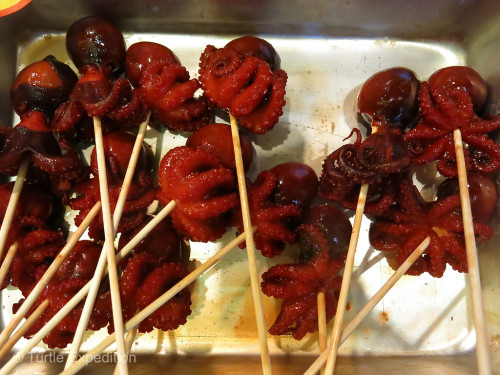
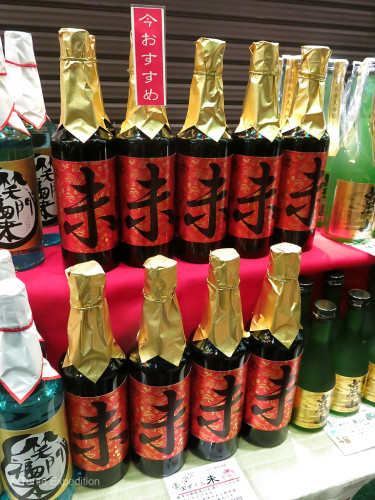
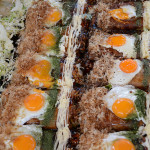
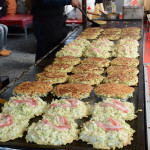
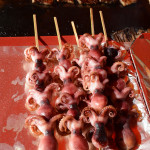
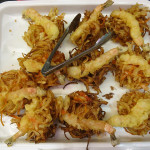
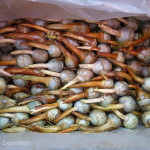
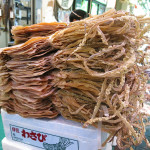
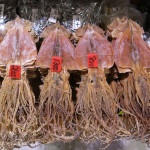
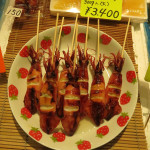
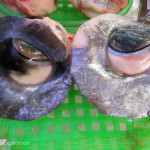
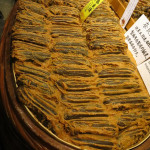
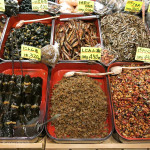
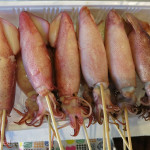
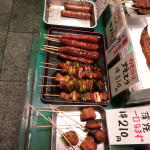
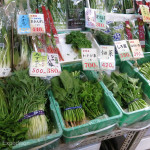
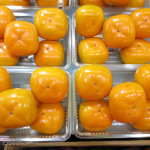
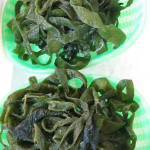
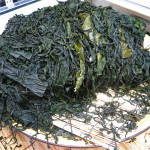
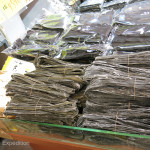
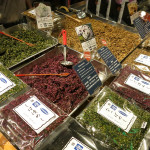
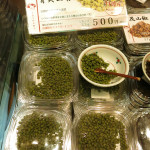
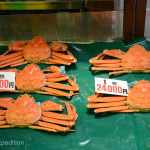
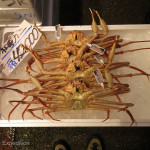
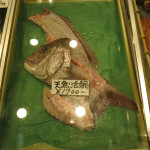
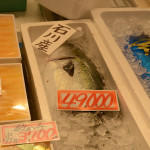
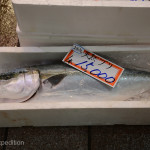
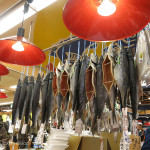
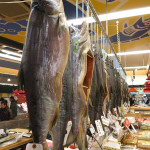
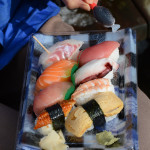
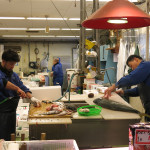
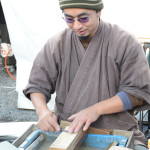
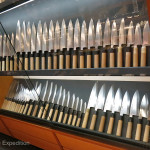
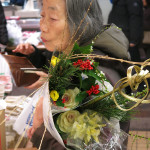
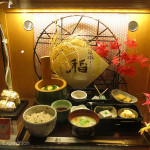
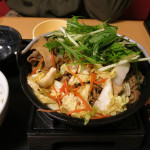

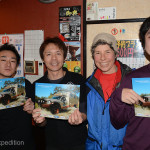
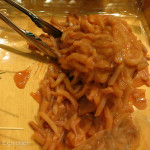
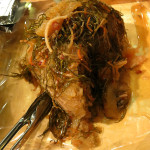
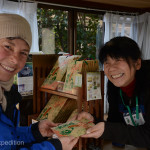
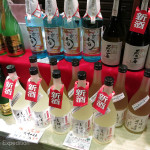
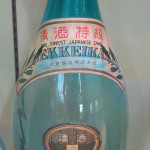
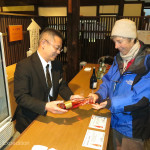
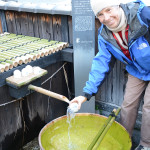
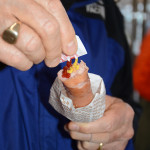





Leave a Comment